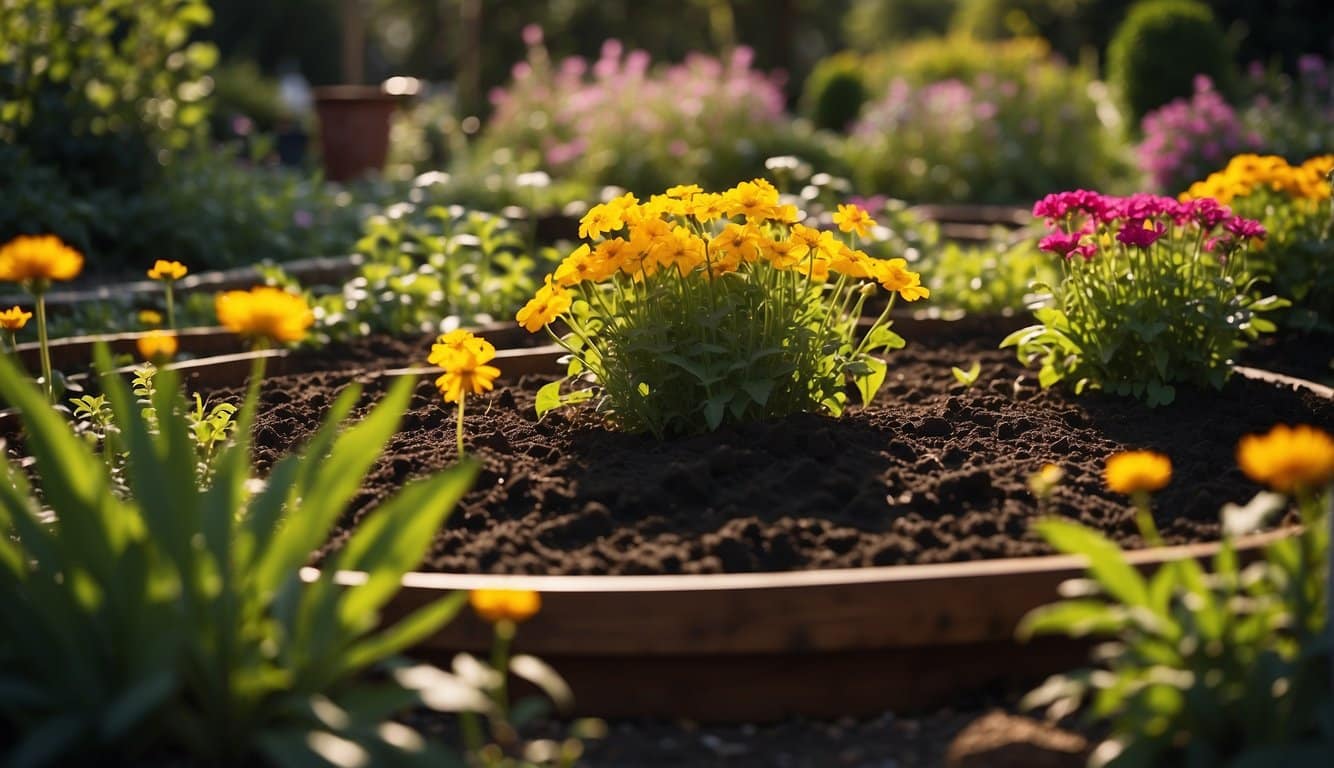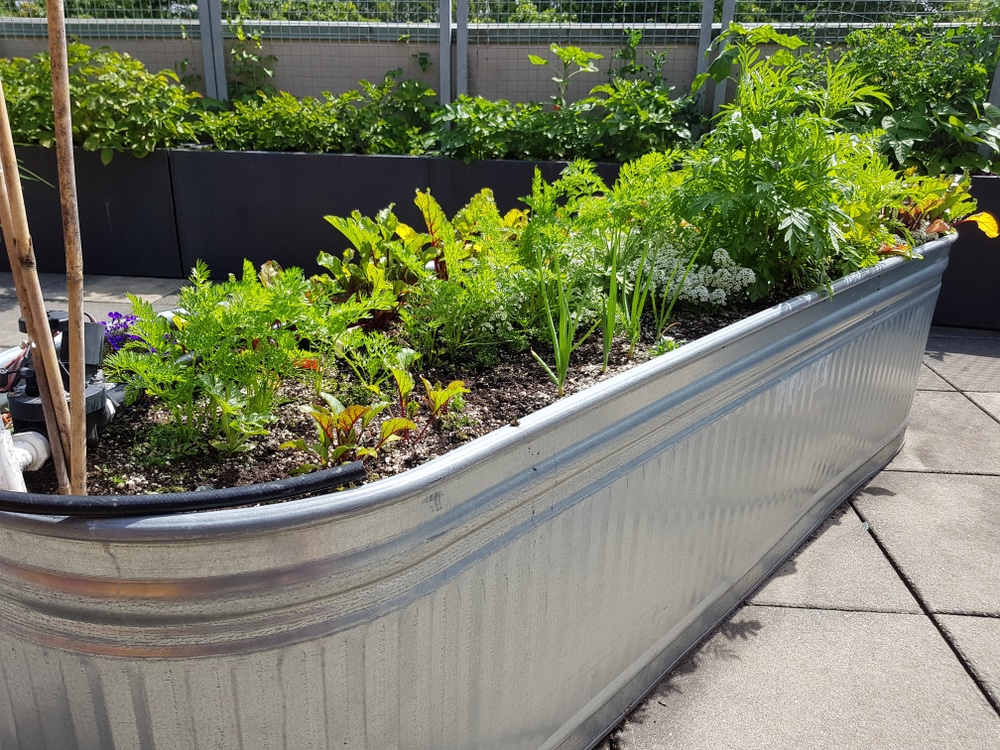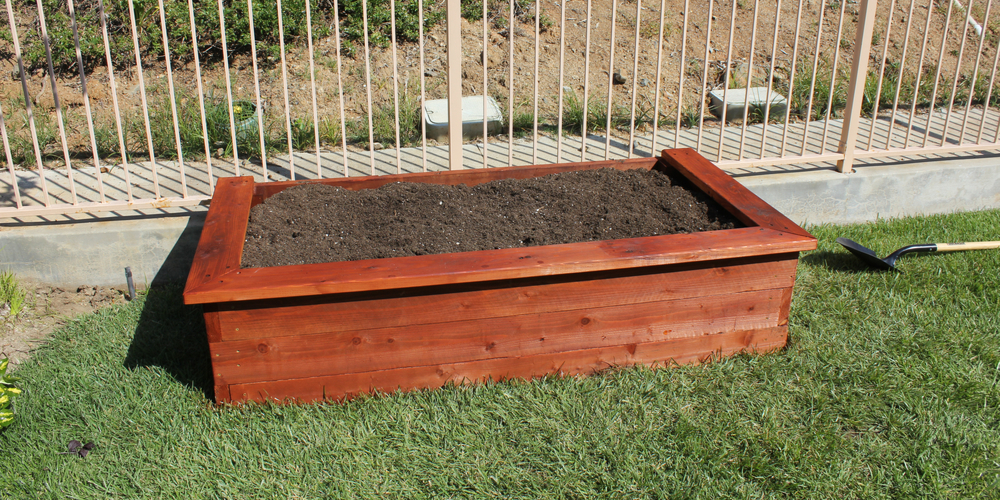Temperature Control
Controlling temperature is a significant benefit of utilizing raised garden beds, particularly during the unpredictable weather of spring.
These structures offer a level of insulation and climate management that ground-level gardening cannot match.
Extended Growing Season
- Warmer soil: Raised beds warm up faster than the ground soil in spring, which can kickstart your planting season.
- Flexibility: You can easily add or remove coverings like hoops and cold frames to adapt to changing temperatures, extending the growing season even further.
Frost Damage Reduction
- Isolated environment: The soil in raised beds is less likely to experience sudden temperature drops that lead to frost, protecting delicate seedlings.
- Controlled exposure: With raised beds, you have the advantage of adding layers such as mulch or burlap to insulate plants against unexpected frost nights.
Improvements in Soil Management
Raised garden beds can significantly enhance your spring gardening experience by offering superior soil management options.
These improvements directly contribute to healthier plants and more bountiful harvests.
Enhanced Drainage
- Prevention of Waterlogging: Your raised garden bed allows for excellent drainage, preventing the risks of waterlogged soil which can often be detrimental to plant health.
- Optimized Water Use: By confining your garden space, water is used more efficiently, reducing waste and ensuring your plants receive just the amount they need for optimal growth.
Soil Quality Maintenance
- Customizable Soil Mix: You have the freedom to create the perfect soil mixture to meet the nutritional needs of your specific plants, which can result in stronger and more productive growth.
- Improved Soil Structure: Regular soil in traditional gardens can become compacted over time, but raised beds maintain a looser structure, promoting better root growth and aeration.
Pest and Weed Control
- Fewer Weeds: The soil in raised beds tends to be less prone to invasive weed growth, saving you time and effort in garden maintenance.
- Natural Pest Deterrents: The elevated structure of raised beds can discourage various pests, including slugs and rabbits, and makes it easier to install barriers against others like voles.
Ergonomic Benefits
When incorporating raised garden beds into your springtime gardening routine, you’ll discover notable ergonomic advantages.
These carefully designed structures offer a gardening experience that’s kinder to your body, particularly focusing on ease of access and reducing physical strain.
Ease of Access
- Elevated Height: Raised garden beds are constructed at a height that eliminates the need to bend over excessively, making them easily accessible for planting, weeding, and harvesting.
- Wheelchair Friendly: They can be tailored to accommodate wheelchair users, ensuring gardening is an inclusive activity for people with varying mobility levels.
Reduced Strain on Back and Knees
- Improved Posture: Tending to a garden at waist height supports maintaining good posture, significantly decreasing the risk of back pain.
- Less Kneeling and Stooping: Since raised beds can be approached from all sides, you can care for your plants with less kneeling or squatting, leading to reduced stress on your knees and joints.
Aesthetic Enhancement and Space Efficiency
Raised garden beds provide a distinct and elevated look to your outdoor space that combines visual charm with practical gardening benefits.
They allow you to grow more plants in a smaller area compared to traditional row-cropping.
Visual Appeal
- Harmonious Design: Raised beds offer a structured look that can complement your overall garden design. They act as natural partitions within your garden, helping to organize space and create a symmetrical layout which can be both pleasing to the eye and beneficial for navigating your gardening space.
- Creative Expression: Use raised beds to add vertical elements to your garden, not just for practical growth advantages, but also for aesthetic variety.
- This can include trellises for climbing plants, which not only optimize space vertically but also contribute to an attractive, multi-dimensional garden.
Maximization of Growing Space
- Optimized Planting Area: By elevating the planting surface, raised beds extend your growing space upward, allowing for deeper soil amendments and healthier root systems.
- Denser Plantings: Achieve denser plantings and higher yields by maximizing your three-dimensional space.
- Space Efficiency: Innovative gardening techniques like square foot gardening are more feasible in a raised bed format, which can support more vegetables due to efficient spacing.
- Also, the clear, physical boundaries of raised beds prevent accidental trampling of plants and optimize your garden pathways.
Frequently Asked Questions
When prepping your garden for spring, raised beds can be a game-changer. They provide improved soil conditions, better pest control, and can enhance your garden’s productivity.
How do raised garden beds improve spring vegetable production?
Raised garden beds warm quicker than the ground soil, which allows you to start your planting season earlier.
It results in a longer growing season, giving your vegetables a head start and potentially leading to a more bountiful harvest.
Can raised garden beds provide benefits for pest management?
Yes, raised garden beds can offer pest control advantages.
The elevation makes it more difficult for various pests, such as slugs and rabbits, to access your plants. Additionally, barriers like hardware cloth can be installed to prevent burrowing pests.
What are the soil quality benefits of using raised garden beds?
Raised garden beds allow you to create the ideal soil environment for your plants.
You have complete control over the soil mixture, which can be tailored for optimal fertility and drainage, leading to healthier plants.
How do raised beds affect the timing and success of spring plantings?
Using raised beds, you can benefit from their ability to drain better than in-ground beds, minimizing soggy soil conditions that can stunt plant growth.
This facilitates timely planting and can lead to more successful spring plantings.
What considerations should be made when choosing between raised garden beds and traditional row gardening?
When deciding if raised beds or traditional row gardening are right for you, consider factors such as the initial investment, maintenance requirements, and the physical space available.
Raised beds may require a higher upfront cost but can reduce the need for bending and stooping.
What are the benefits of covered raised garden beds in early spring?
Covered raised beds protect your early spring plantings from frost and excessive rain. This allows seeds to germinate and seedlings to grow without the setbacks of cold snaps.
This can extend the growing season and protect young plants during unpredictable spring weather.


